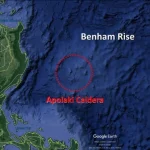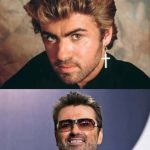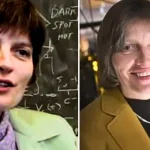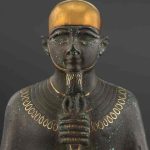Colossal statue of King Menkaura
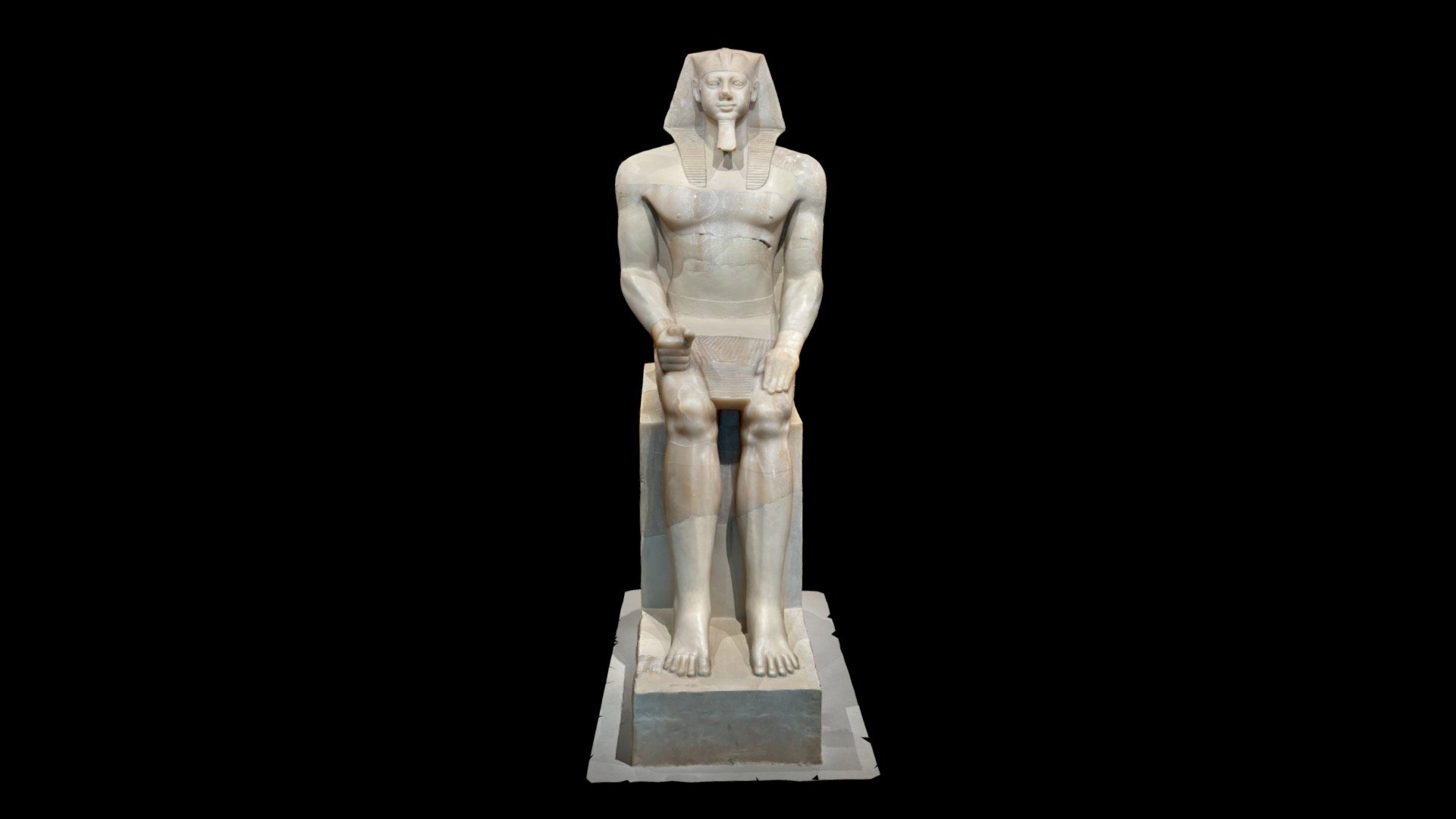
Colossal Statue of King Menkaura (Mycerinus)
Builder of the third-largest pyramid at Giza, Menkaura was the grandson of Khufu and the son of Khafre. This colossal statue represents the pharaoh in idealized form, emphasizing his royal lineage and role as a divine ruler.
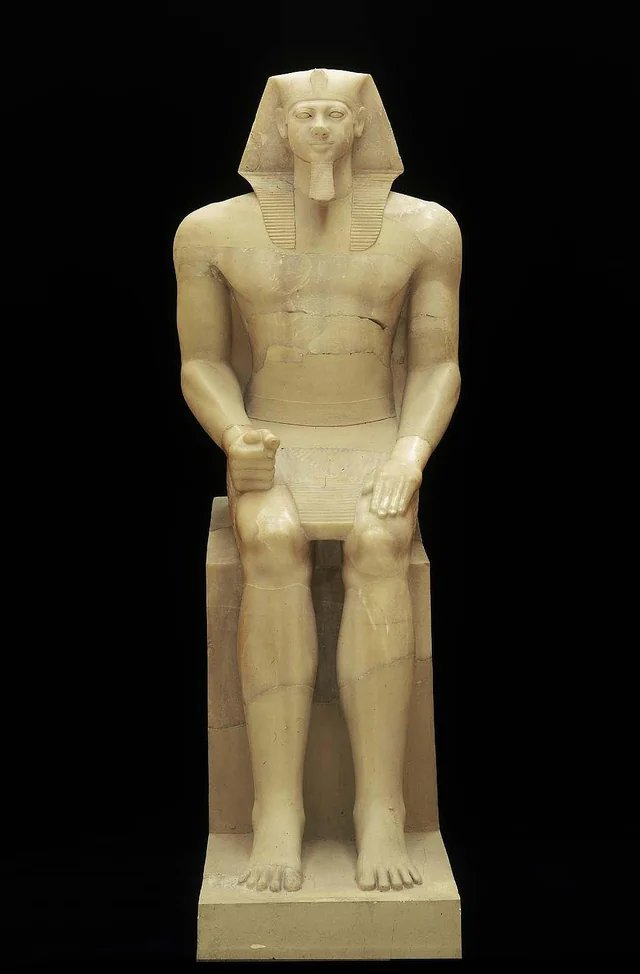
This colossal statue ranks among the largest sculptures of the Pyramid Age. Restored to a height of nearly 2.35 meters (8 feet), it depicts King Menkaura, the builder of the smallest of Giza’s three pyramids. His attire and headgear unmistakably mark him as the ruler. He wears a wraparound kilt with a central projection, a garment reserved exclusively for kings until the end of the Old Kingdom. On his head rests a royal headdress, the nemes, adorned at the brow with a cobra, or uraeus. This sacred serpent was believed to protect the king, coiling around his brow and striking enemies with its venom. Menkaura’s long, straight beard, another symbol of kingship, was fastened with a strap that was once painted directly on the statue’s head. His right hand clasps a folded cloth, its ends draping over his thigh.
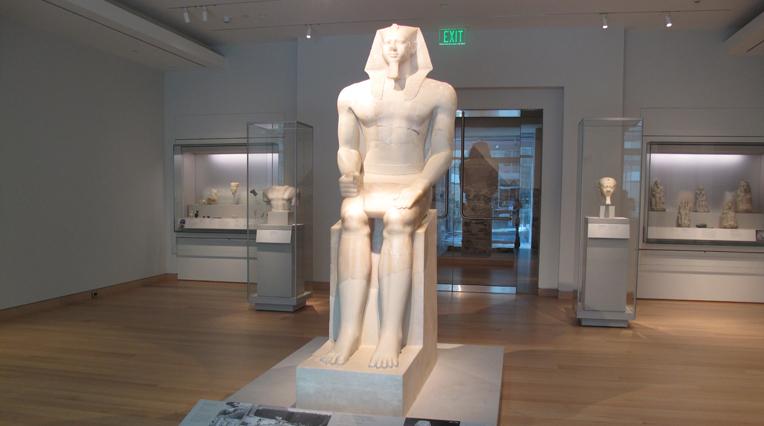
The king’s expression conveys regal composure and absolute authority. With slightly protruding eyes, a bulbous nose, a faintly painted mustache (now barely visible), a set mouth with a pouting lower lip, and a firm chin, the face is distinctive. Whether it reflects an actual likeness of Menkaura, however, cannot be known. The figure portrays a mature adult, though neither the face nor the body shows signs of aging. Observers have often noted that the head is unusually small in proportion to the body. Whatever the artist’s intent, this choice accentuates the broadness of the torso and reinforces the image of the king as all-powerful.
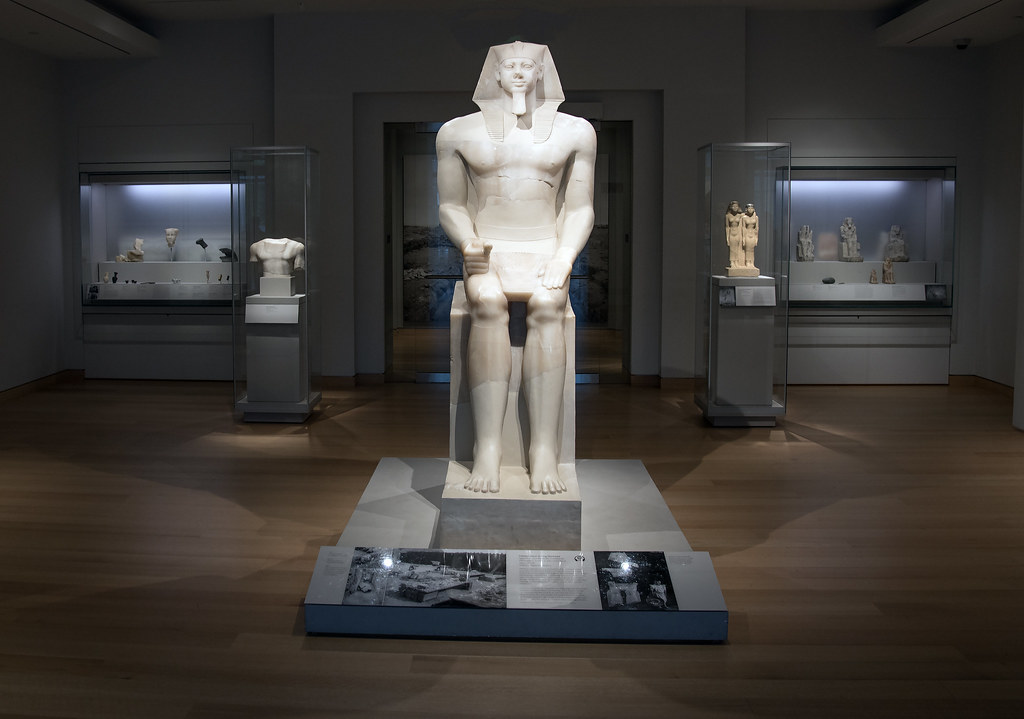
Originally, the statue stood in a deep niche at the back of Menkaura’s Pyramid Temple, at the base of the eastern face of his pyramid, until it was deliberately destroyed for unknown reasons. In January 1907, George Reisner recovered fragments of the shoulder and torso from a pit in the temple and a large section containing the hands, legs, and throne base from an adjacent corridor. Two months later, while excavating a nearby robber’s trench, Reisner discovered the head nearly intact.
Old Kingdom, Dynasty 4, reign of Menkaura, 2490–2472 B.C.

